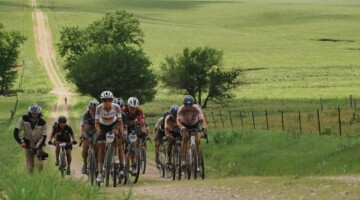Heading into the 2019 cycling season, the EF Education First program drew attention with its proposed “alternative racing calendar,” targeting events such as the Dirty Kanza 200 and Leadville 100.
However, quietly planning a multi-disciplinary program of his own was then-Trek-Segafredo’s Peter Stetina. Stetina put his name on the groad map by winning the Belgian Waffle Ride in May and then grinding to a 2nd-place finish at the Dirty Kanza 200 (he even entered the lottery!). A narrow 4th-place finish at the Leadville 100 helped cap an impressive rookie “alternative calendar” season.
Doing those races, however, was about much more than just good results for the rider who made his WorldTour debut nearly a decade ago.
“[Alternative racing] had my complete attention after BWR and Kanza,” Stetina said. “BWR was pretty monumental in terms of how I viewed cycling in the U.S. and the grassroots scene. It was just so much fun, and it reignited a fire deep down. Then Kanza built on that and Leadville built on that. I just realized this was where I was happiest in bike racing at the moment.”
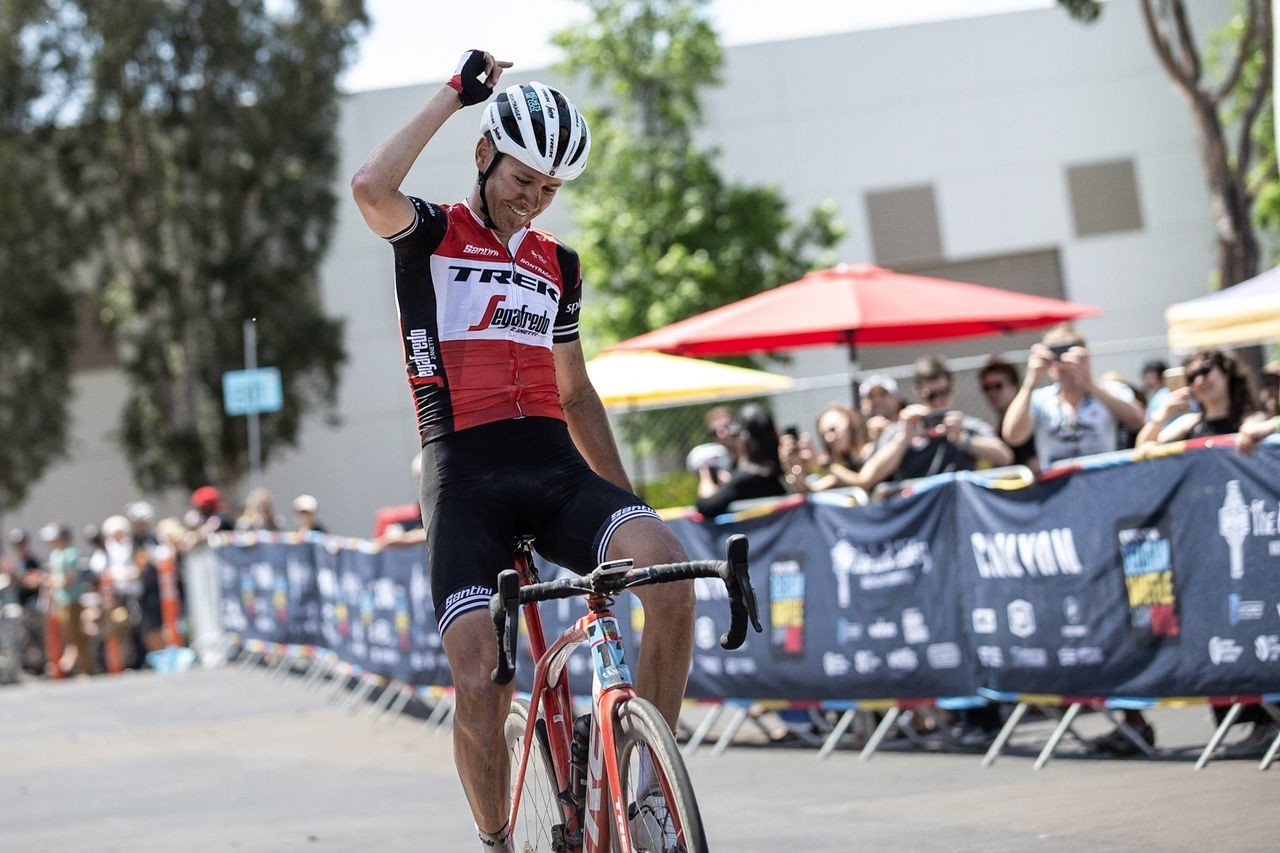
Peter Stetina won his groad debut at the 2019 Belgian Waffle Ride. photo: BWR Photo Pool
Somewhere in the midst of his grinding, Stetina made a monumental personal decision for 2020—he was going to leave the WorldTour and continue his career as a professional groad privateer.
“It was hard to take that initial step and make that decision to leave the WorldTour. That’s the tried and proven path,” Stetina admitted. “It’s cutthroat racing and a hard lifestyle with the traveling, but it was a known quantity for me. It’s definitely hard to take that leap, but once I took it, the outpouring and interest and the gratification that has already come have validated my decision.”
Sponsors for his program at the moment include Canyon, Shimano, Clif Bar, Sportful Clothing and IRC Tires, and his schedule is expected to include a mix of gravel, groad and endurance mountain bike events across the U.S. and abroad.
Stetina said his 2020 national-level program to kick off at the Land Run 100 in March, and he will also be targeting other big races such as Belgian Waffle Ride, the Dirty Kanza 200, Grinduro and the Leadville 100.
Part of why gravel has grown in the U.S. is the inclusive nature and friendly vibe fostered while riding roads less traveled across the country. Although he already has great results in just his first groad season, Stetina said his goal for 2020 is about more than just results.
“Lifestyle is just as important,” he said. “It’s about honorable racing. It’s about not skipping turns. It’s about attrition. And it’s about community. At the end of the day, we’re all going to have a beer together and talk about the trials and tribulations.”
“The great thing about a good IPA is it’s great for celebrating and it’s great for commiserating. At these events, everyone goes out and they go through their own personal hell. It’s very Type 2 fun. There’s really not much difference between me finishing DK and the person finishing in the middle of the night. They pushed to the absolute limit. There’s a communal aspect in that, knowing we all met our maker, but we got through it. I want to recognize that with everybody.”
I recently chatted with Stetina about his new professional groad privateer program and plans for 2020. You can read a transcript of our conversation below.
Interview: Peter Stetina, Professional Gravel Privateer
Cyclocross Magazine: We chatted after you won Belgian Waffle when the whole gravel and groad thing was new to you. What was the progression from doing that, doing the Dirty Kanza and getting a good result there to saying, ‘Hey, I want to be a professional gravel racer?’
Peter Stetina: It was the pursuit of happiness. It had my complete attention after BWR and Kanza. BWR was pretty monumental in terms of how I viewed cycling in the U.S. and the grassroots scene. It was just so much fun, and it reignited a fire deep down. Then Kanza built on that and Leadville built on that. I just realized this was where I was happiest in bike racing at the moment, and I could see through the social media interest, the interview requests, the industry interest that this thing has legs. In my mind, there is a real opportunity to make this financially viable and turn it into a full-time focus instead of moonlighting in it on the side.
I made the decision to pursue it. It was hard to take that initial step and make that decision to leave the WorldTour. That’s the tried and proven path. It’s cutthroat racing and a hard lifestyle with the traveling, but it was a known quantity for me. It’s definitely hard to take that leap, but once I took it, the outpouring and interest and the gratification that has already come have validated my decision.
CXM: I don’t want to necessarily call you a pioneer or whatever, but this is definitely a road less traveled, saying, ‘Hey, I want to do this new developing scene full-time.’ Did you look to other sources for motivation or a blueprint for what this could look like?
PS: Yeah, I’ve seen it can be somewhat sustainable. Ted King is doing this full-time now, and he’s had success with it. Granted, we have different career paths and different styles of how we’ve done things, but you can see he puts in the work and has done really well.
A big part of it is Gary Erickson at Clif Bar is one of the biggest mentors in my life, and they’re a big partner for next year, his entire story is taking the road less traveled and walking away from a guaranteed thing in the big-time to pursue his dream and what he believed was right. That’s the whole story of how Clif was born. He has fully supported me in this decision, and he believes in taking that shot if you believe in it. He was a big help and a big sounding board for making this choice.
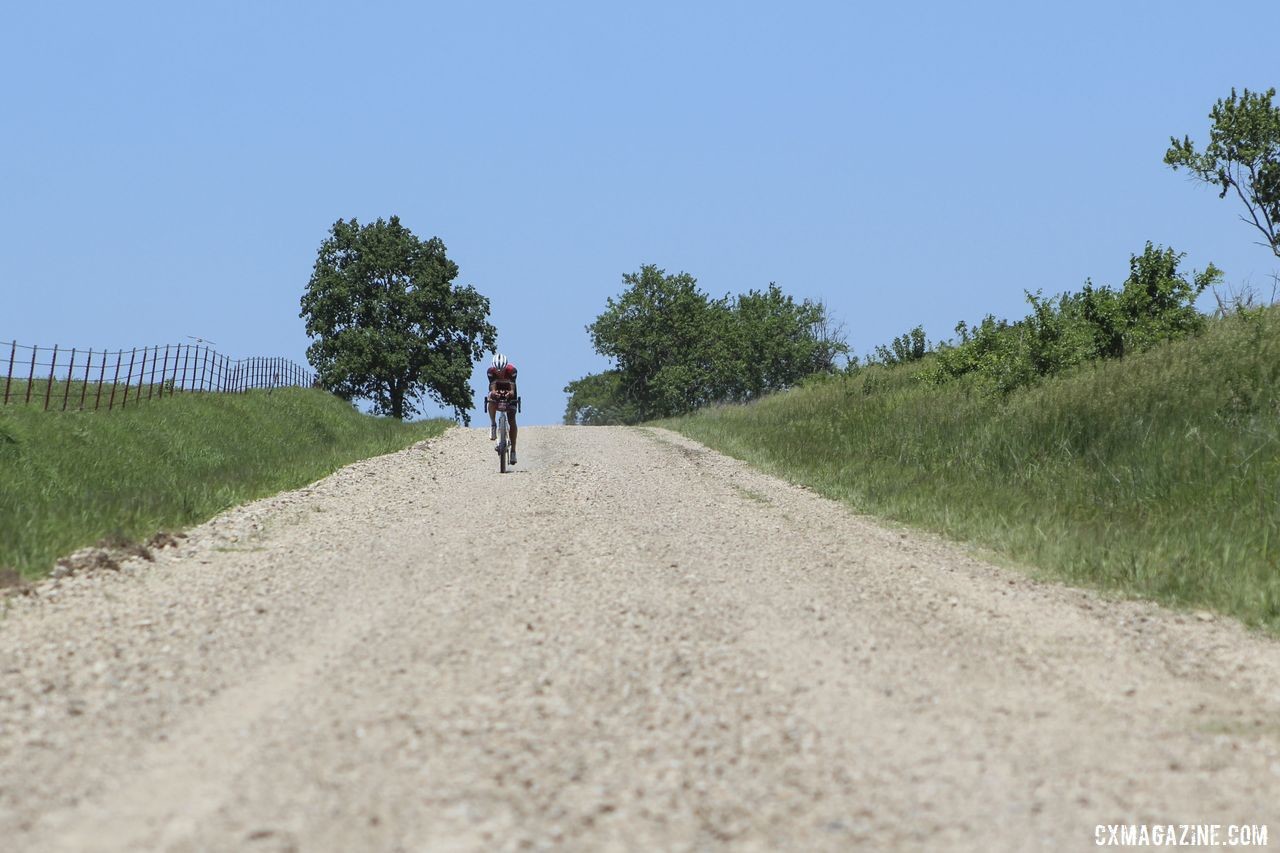
Peter Stetina hits the road as the first pro gravel privateer in 2020. 2019 Dirty Kanza 200 Gravel Race. © Z. Schuster / Cyclocross Magazine
CXM: Your partners include Clif Bar, I think I read Canyon is on board? Who are your partners for the program?
PS: There are more to be announced, but I can currently tell you it will be Canyon bikes, Shimano tip-to-tail, including wheels, components, shoes, pedals, helmets, glasses. It’s the Lazer helmet. Then Sportful Clothing for my race kit and training gear. IRC will be my tire sponsor.
CXM: Does that mean you’ll be riding the Grail with Shimano GRX?
PS: Every race setup will be different. The focus will be on highlighting the compatibility of what you can do across different platforms. For the gravel races, I will be on the Grail, but how we’re going to build that out with Shimano will be a changing thing. The GRX is definitely robust and durable, however, sometimes I’m going to be on pure Dura-Ace for the lightest weight. For example, power meter training, I’ll be using the Dura-Ace crankset. The nice thing with Shimano is you can kind of mix and match to create the perfect gearing combo and part combination possible. You might see me on a GRX derailleur with Dura-Ace shifters, or something like that.
CXM: Gravel has a lot of grassroots support but no TV yet. We’ve seen where EF had some money to do some cool videos and stuff. What are your plans for producing value for your sponsors? That’s another thing that’s not set in stone for gravel.
PS: It’s always a revolving thing, but there are many different ways to make that happen. Content creation is an important part of being an athlete. Media and social media are important. Interviews such as this one are important for me and my sponsors. I’m lucky enough that I’ll have eyes on me next year. I know it puts a sense of responsibility on my shoulders, and it’s going to give me a reason to get out every day.
For a lot of my sponsors, content creation will be a big part of what we do. I’m excited to talk about the products, and every sponsor I’m working with, there’s a personal reason why I chose them. It’s not just reaching out for a paycheck and some parts. I have carefully curated and selected each sponsor, and there’s an expectation we will work together through media and R&D to tell a story about both of us.
For example, this is a multi-discipline program. You’re not just going to see me at gravel races. You’ll see me at mountain bike races and even some road races. With Canyon, I’m happy to highlight their full range of bikes. Most bike riders have more than one bike, and there is usually a bike for the job, and the content creation will be highlighting that.
I’m not a media, YouTube guy though. I’m a bike racer. I’m still focused on bike racing, but why I love this scene, and a lot of people love this scene, is it’s fun and it’s also a lifestyle. That’s going to be a really heavy focus as well. I think there’s a way to do both.
My position is gravel is legit now. This can be another viable option beyond just being a pro roadie. I want this to be an inclusive movement. I’m definitely not the only person who’s going to do this, and I hope this will set a trend for other athletes too. Just as the gravel community is inclusive, I want what I’m doing to be inclusive.
I’m going to treat this as a pro racer because I think it shows gravel is legit and here to stay, but at the same time, I hope more folks follow my idea.
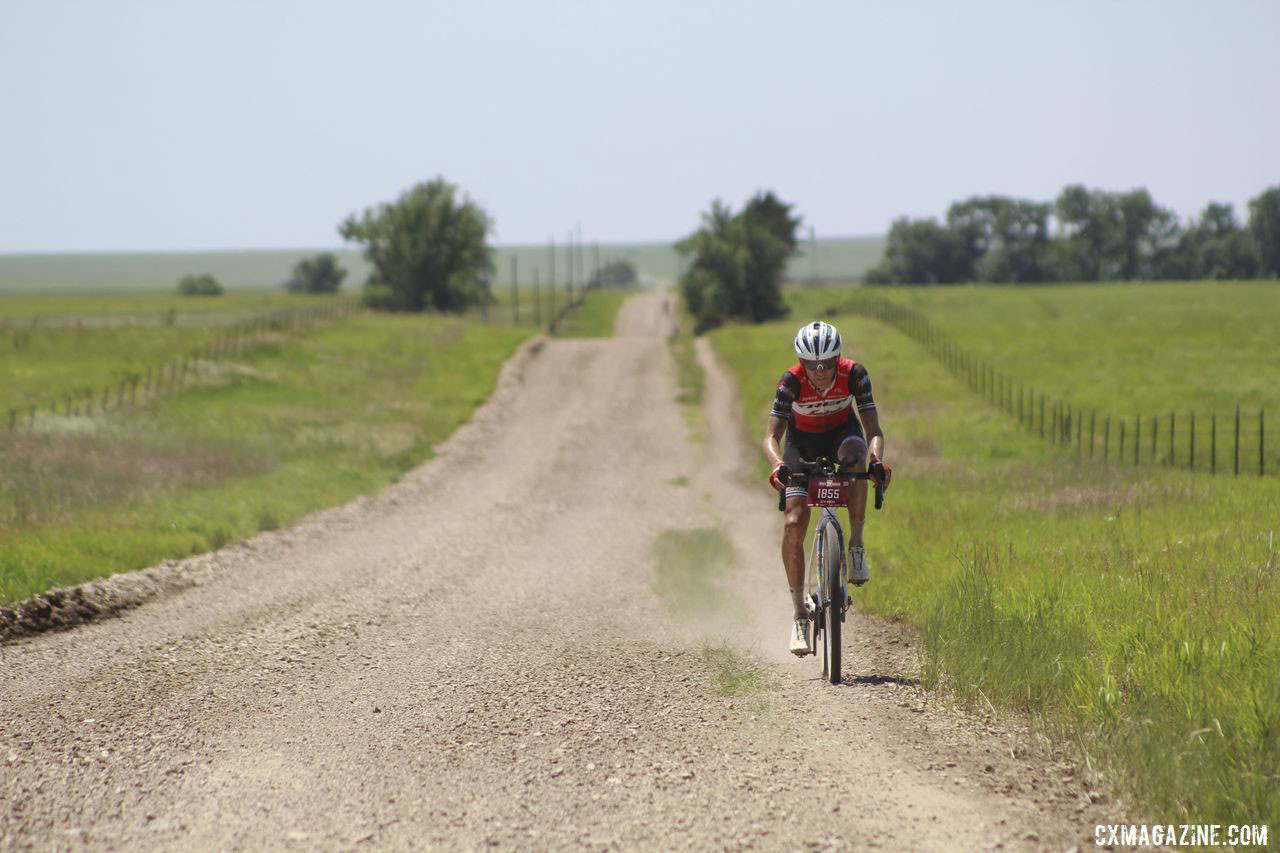
Peter Stetina will be back at the Dirty Kanza 200 in 2020. 2019 Men’s Dirty Kanza 200 Gravel Race. © Z. Schuster / Cyclocross Magazine
CXM: Talking with you and seeing your reaction to enjoying the crap out of BWR and Dirty Kanza, I think that reflected the experience most amateurs have as well. I know it was true for myself. I think anyone who’s done gravel is not surprised you’ve kind of fallen in love with it and are taking this route. But you made your announcement, and there were people out there who were like, ‘Oh, gravel pro, that sounds stupid.’ What was your reaction to those folks and the bigger picture reception you got?
PS: You know, I can tell you I think it’s been 98% positive. It’s more positive than the normal announcement in any other regard on social media. There were way fewer trolls. For the trolls still out there, I’ll say, who hasn’t dreamed of being their own boss? It’s empowering, and there’s a chance to make a living and have validation that you can do it. And have people who support you in doing that. It’s following a dream. You have to be a pretty big sourpuss for calling someone out for following their dream and trying to find happiness.
CXM: You will be having a lot more fun than the trolls, that’s for sure.
PS: Yeah, yeah.
CXM: I was talking to Amanda Nauman, and she was really interested to hear about your plans for what kind of races you’ll be targeting? Did you make it in Land Run? What does your schedule look like?
PS: I’ll be at a lot of the biggest gravel races, and even some foreign ones. You’ll see me at the majority of the biggest U.S. gravel races. My first outing in 2020 will be the local Grasshopper Adventure Series [in California], but then my first national-caliber event will be the Land Run 100. Then you’re going to see me at the LifeTime events. SBT GRVL. I’m really excited they created the LeadBoat Challenge because as a stage racer, I think I have a lot of experience to offer to the riders taking on that adventure. Then you might even see me in Europe in Iceland, some Grinduros, even Japan.
CXM: Sweet. You’re doing the Rift?
PS: Yeah, I will be at the Rift. Of course, the Belgian Waffle Ride kind of kicked this whole thing off, so that will be a focal point of my season.
CXM: Part of being a professional bike racer is getting paid when you win and do well. Some gravel events don’t do payouts though, they give you a belt buckle. Are you going to be balancing events that have payouts with events that have prestige? Have you thought about ways translating, say, winning LandRun into getting paid?
PS: To be blunt, a big factor in making this decision was can this be financially viable. At the end of the day, cycling is my job, and I have to pay my mortgage. Everyone can relate to that. However, I also have to take a long-term view in knowing that this is a somewhat, to take words out of your mouth, of a pioneering step and realize that even if the money doesn’t come at the moment, that by highlighting certain events it will pay off in the long run. It’s a balance of that.
I can say now I’m lucky enough with the sponsors at my back and the support of the industry, I will be able to still treat my life as that of a pro bike racer and make a living. I mean, I’m taking a pay cut from the WorldTour, but it’s still going to work out. I don’t have to get a job at a cafe on the side, which I am very thankful for.
CXM: Is your training going to change at all? Have you given thought to how it will be the same and how it will be different?
PS: It’s a step into the unknown. It’s going to be a very exciting and fresh thing after a decade in the WorldTour. For one, there’s no more stage racing. A big part of how I trained was doing 4, 5-day blocks where I was riding 4 hours everyday kind of thing. Now it’s going to be more one-day races except for the LeadBoat and an appearance with a composite team at a road race here and there.
I’m going to have to totally re-think my training plan. My coach has decided to take on the challenge with me. I’m guessing I’m going to have to put on a little bit of upper body weight. It’s not going to be so much about being a super skinny climber as it is handling those Kansas rollers with a little more force. I think I will be changing my intervals to reflect that.
I think I will still be doing a majority of my training on the road bike just because I’ve done that my whole career. I know how to do the intervals, I know the right routes in town I want to take, the climbs I want to do and how to get the most out of myself because at the bottom line, gravel is still a fitness test.
CXM: Right after you had finished second at DK, you talked about it being a grind. You live in Cali, and gravel is a bit different there from DK. Lost and Found is different from DK is different from Grinduro. What skills do you think are important to develop or that you have to take on this challenge of being a gravel race?
PS: It’s going to take endurance. I think I will be doing a lot more long 7-8 hour training rides, where training for the WorldTour was doing more 5-hour rides but doing them back-to-back. You’re going to need that endurance. You’ll also need more technical ability. I think I will be doing more on the gravel bike, more adventurous training and kind of pushing it through loose corners and stuff.
Technical ability does make a huge difference, but I’m still a pro bike racer, so I want to have the best preparation I can coming into an event. I’m still going to do altitude training and watch my diet. I’ll still enjoy drinking a beer at the post-race festivals, but I won’t be partying hard.
It’s a step into the unknown. I think you and I should have this conversation again at the end of the season. What did I have to change to hopefully find success? What worked? It’s going to be more competitive than ever. This year it was like, ‘Oh the pros are coming to Kanza,’ and it was a new thing with Kiel [Reijnen] and myself and the EF boys, but I think that was kind of the trial to see how it would be received. It went well, and I think there will be another step again coming soon.
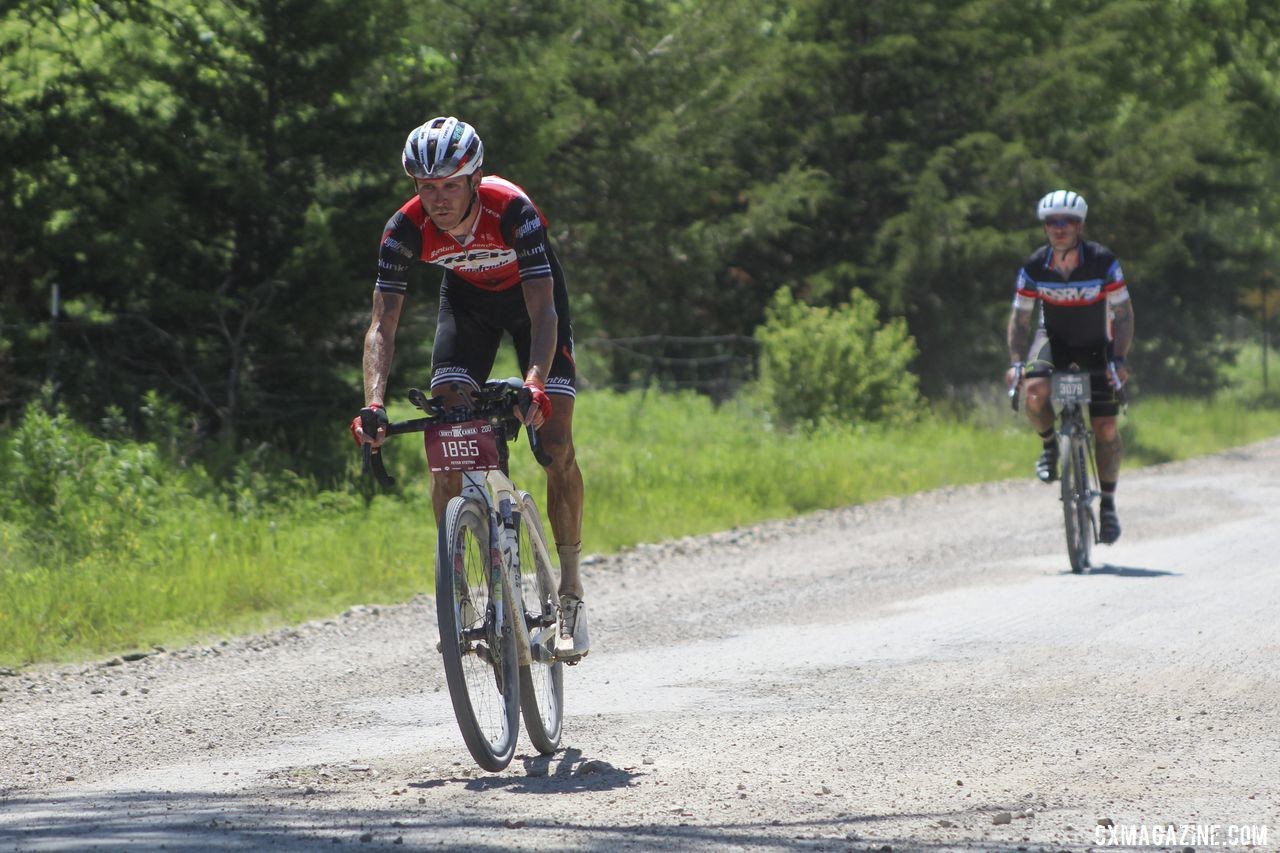
Stetina said training his technical and handling skills will be an important part of his program. 2019 Men’s Dirty Kanza 200 Gravel Race. © Z. Schuster / Cyclocross Magazine
CXM: Oh yes, it’s only going to get harder. I think there’s going to be more people like yourself who see all the energy and excitement behind gravel.
PS: At least in the U.S., yes. And I think Europe is watching closely.
CXM: Results are obviously going to be super important, but beyond winning races, if we talk a year from now, what will success look like?
PS: Results and podiums are definitely important, but they’re not the be-all and end-all like they are in WorldTour road racing. Lifestyle is just as important. It’s about honorable racing. It’s about not skipping turns. It’s about attrition. And it’s about community. At the end of the day, we’re all going to have a beer together and talk about the trials and tribulations.
The great thing about a good IPA is it’s great for celebrating and it’s great for commiserating. At these events, everyone goes out and they go through their own personal hell. It’s very Type 2 fun. There’s really not much difference between me finishing DK and the person finishing in the middle of the night. They pushed to the absolute limit. There’s a communal aspect in that, knowing we all met our maker, but we got through it. I want to recognize that with everybody.
Success to me is having a good season, results-wise, but also appreciating the two-wheeled community and giving back to the vibe that made me fall in love with this racing in the first place.
CXM: Well cool, I really appreciate you taking the time to chat with me, and I’m really stoked to see how this goes for you.
PS: Definitely. Let’s chat again during the season.


























